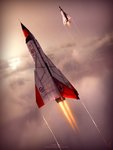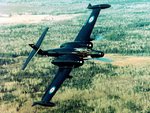fastmongrel
1st Sergeant
The Arrow just. Neither would be described as pretty without the aid of a pair of beer goggles though.
You want contemporary and prettier than those two I give you the Grumman Tiger

You want contemporary and prettier than those two I give you the Grumman Tiger
Last edited:







